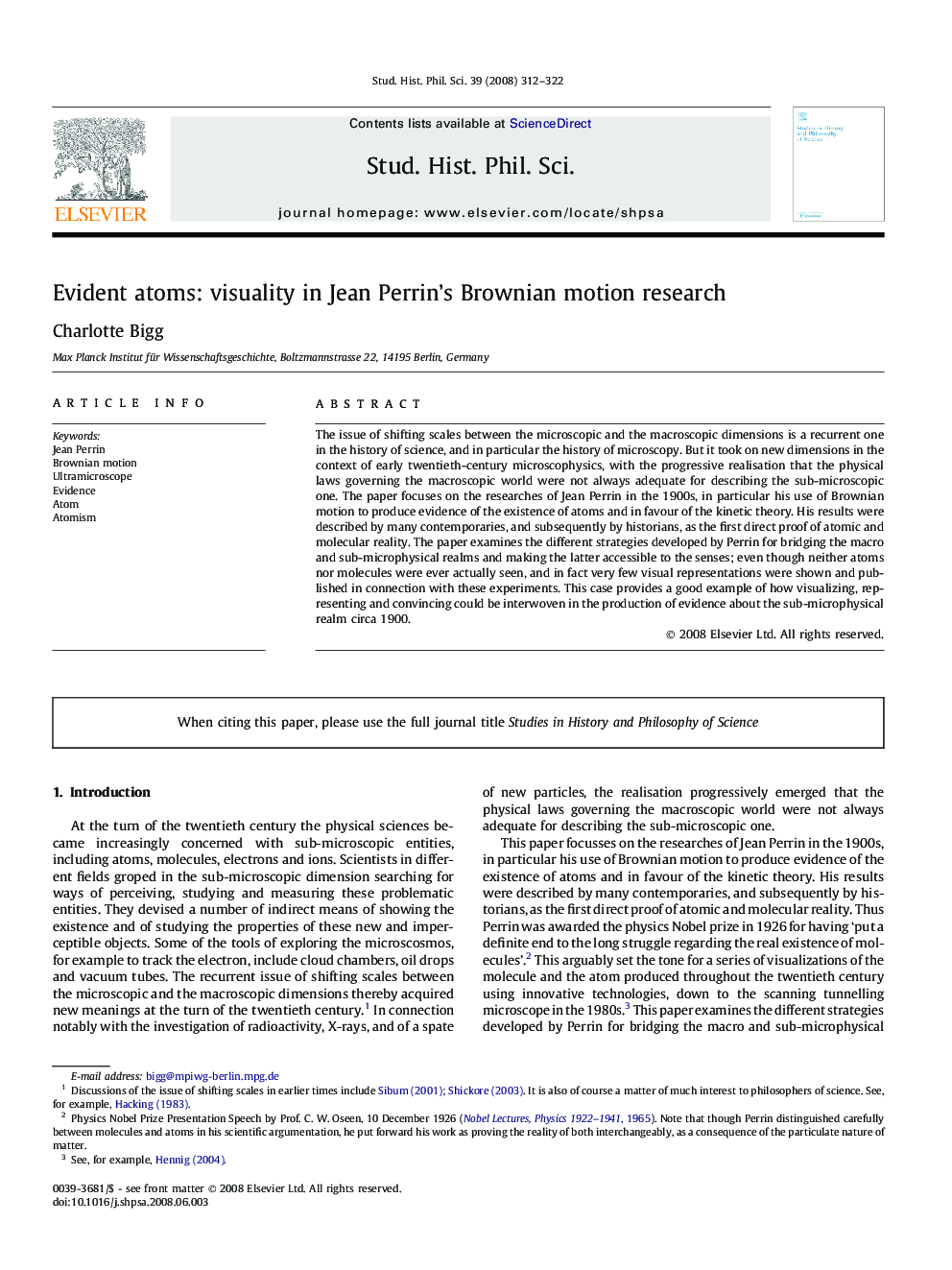| Article ID | Journal | Published Year | Pages | File Type |
|---|---|---|---|---|
| 1160433 | Studies in History and Philosophy of Science Part A | 2008 | 11 Pages |
The issue of shifting scales between the microscopic and the macroscopic dimensions is a recurrent one in the history of science, and in particular the history of microscopy. But it took on new dimensions in the context of early twentieth-century microscophysics, with the progressive realisation that the physical laws governing the macroscopic world were not always adequate for describing the sub-microscopic one. The paper focuses on the researches of Jean Perrin in the 1900s, in particular his use of Brownian motion to produce evidence of the existence of atoms and in favour of the kinetic theory. His results were described by many contemporaries, and subsequently by historians, as the first direct proof of atomic and molecular reality. The paper examines the different strategies developed by Perrin for bridging the macro and sub-microphysical realms and making the latter accessible to the senses; even though neither atoms nor molecules were ever actually seen, and in fact very few visual representations were shown and published in connection with these experiments. This case provides a good example of how visualizing, representing and convincing could be interwoven in the production of evidence about the sub-microphysical realm circa 1900.
